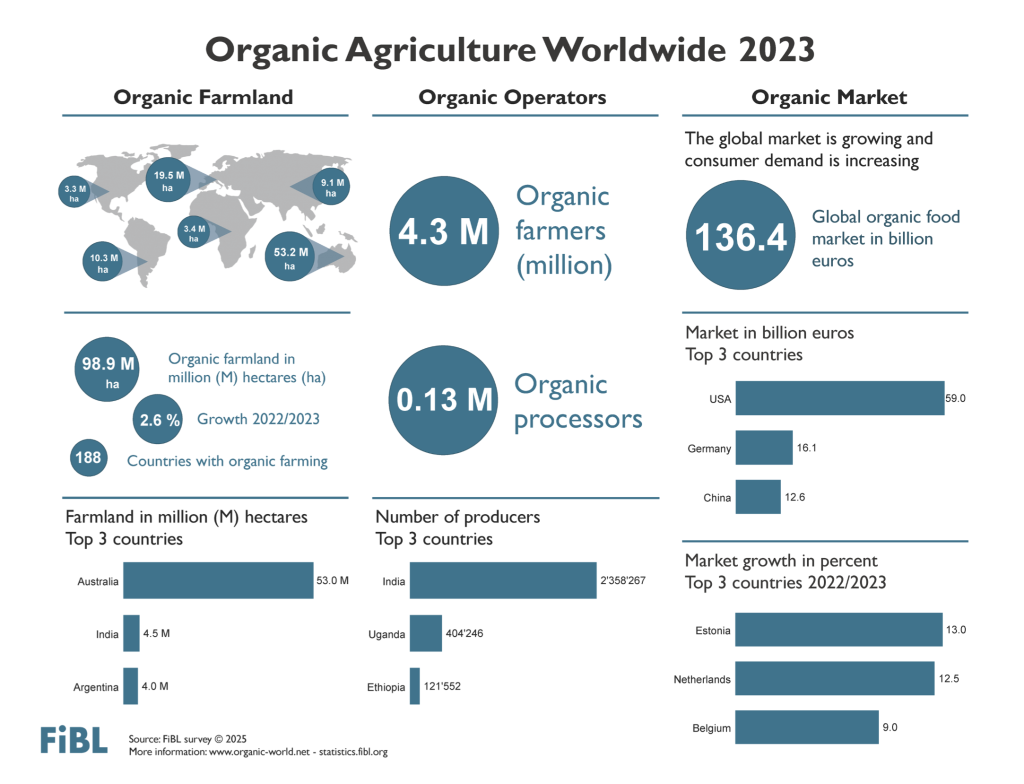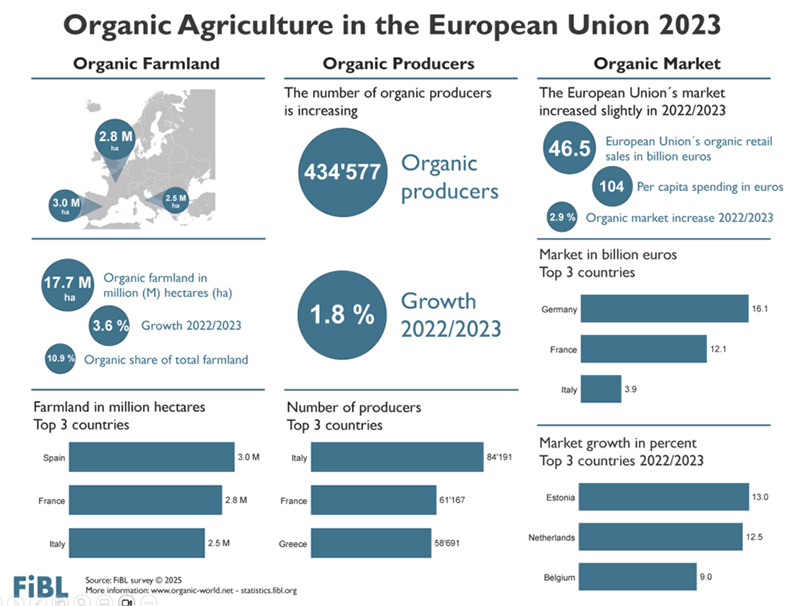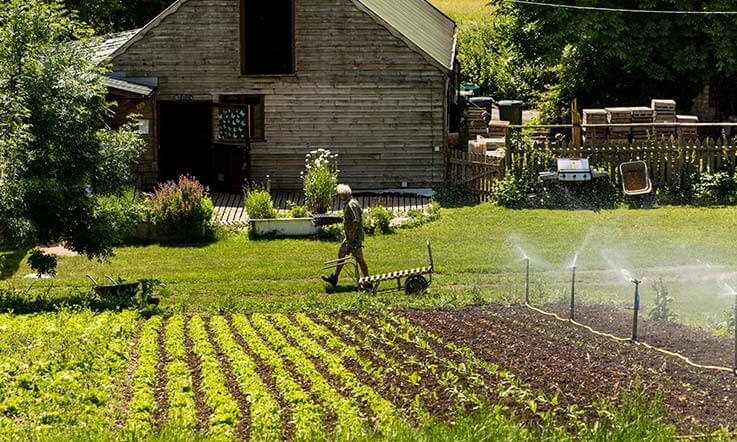Organic farming expands by 2.5 million hectares globally to nearly 99 million hectares. Global market grows to more than 136 billion euros. Latest figures have been released in The World of Organic Agriculture.

The European Union’s organic area continued to grow steadily in 2023, reaching 17.7 million hectares, which accounts for 10.9 percent of the total farmland. Retail sales experienced a growth of 3.6 percent in the EU.
In 2023, 19.5 million hectares of farmland in Europe were organically farmed, including 17.7 million hectares within the European Union (EU). Spain overtook France as the country with the largest area of organic farmland, reaching 3.0 million hectares. France followed with 2.8 million hectares, while Italy recorded 2.5 million hectares.

Continued growth in organically farmed land
Organic farmland increased by more than 0.6 million hectares, representing a 3.6 percent increase in the EU and a 4.1 percent increase in Europe. Compared to 2022, Spain and Ukraine reported the largest increases, with an additional 0.3 million hectares and 0.2 million hectares, respectively.
Liechtenstein had the world’s highest share of organic farmland
In 2023, organic farmland in Europe constituted 3.9 percent of the total agricultural land, while it accounted for 10.9 percent in the European Union. Among European countries and globally, Liechtenstein had the highest organic area share at 44.6 percent. They were followed by Austria, the EU country with the highest organic share at 27.3 percent. Sixteen European countries reported that at least 10 percent of their farmland was organic.
Organic producers in the EU increased by almost 2 percent
There were almost 495,000 organic producers in Europe and nearly 435,000 in the EU in 2023, representing a one-year increase of 1.4 and 1.8 percent, respectively. Italy had the highest number with 84,191.
In Europe, there were 94,627 processors, while the EU had 89,379. Additionally, 7,955 importers were counted in Europe, with 6,727 in the European Union. Italy had the highest number of processors, nearly 25,000, while Germany led in the number of importers with almost 2,000.
Retail sales valued at 54.7 billion euros in Europe
In 2023, retail sales of organic products in Europe reached a total of 54.7 billion euros, including 46.5 billion euros within the European Union. Germany remained the largest market, with sales totalling 16.1 billion euros. Globally, the EU was the second largest single market for organic products, after the United States, which reported sales of 59.0 billion euros.
After a slight decline in 2022, the European market grew by 3.0 percent in 2023 (EU: 2.9 percent), equivalent to an increase of 1.6 billion euros (EU: 1.2 billion euros). While most countries reported single-digit growth, sales in Estonia and the Netherlands saw double-digit increases (+13.0 percent and +12.5 percent, respectively).
European consumers spent 66 euros per person on organic food in 2023
In 2023, consumers in Europe spent an average of 66 euros on organic food per person (104 euros in the EU). Consumer spending on organic food per capita doubled in the decade from 2014 to 2023. In 2023, Swiss and Danish consumers spent the most on organic food, with 437 and 362 euros per capita, respectively.
Denmark had the highest organic market share in the world In 2023, European countries continued to achieve the highest organic market shares worldwide. Denmark maintained its leading position with an organic market share of 11.8 percent, followed closely by Switzerland with 11.6 percent.
The yearbook, jointly published by FiBL and IFOAM – Organics International, is supported by the Swiss State Secretariat for Economic Affairs (SECO), the Sustainability Fund of Coop Switzerland, and NürnbergMesse, the organiser of BIOFACH trade fair.
The book can be ordered or downloaded at https://www.fibl.org/en/shop-en
